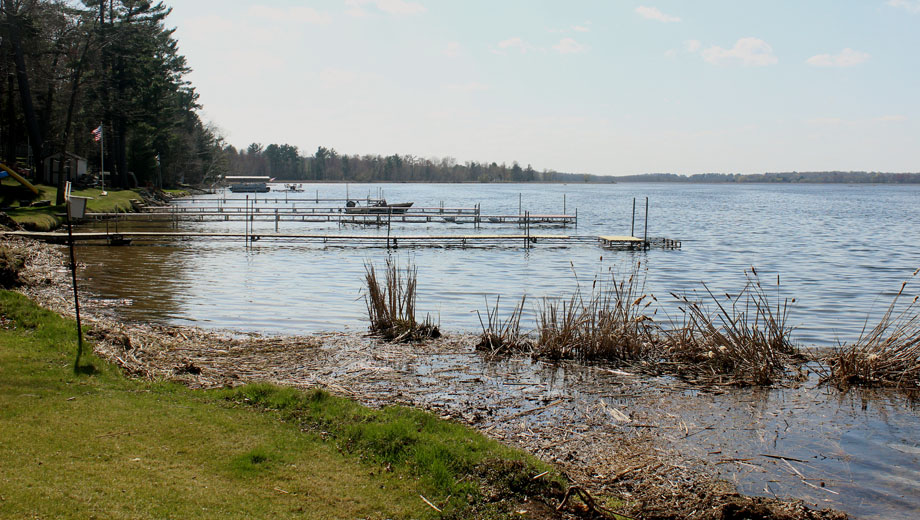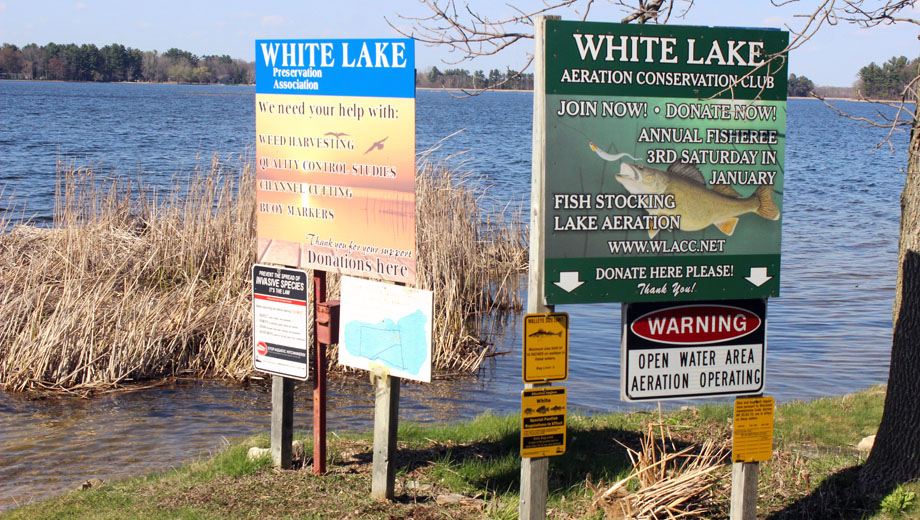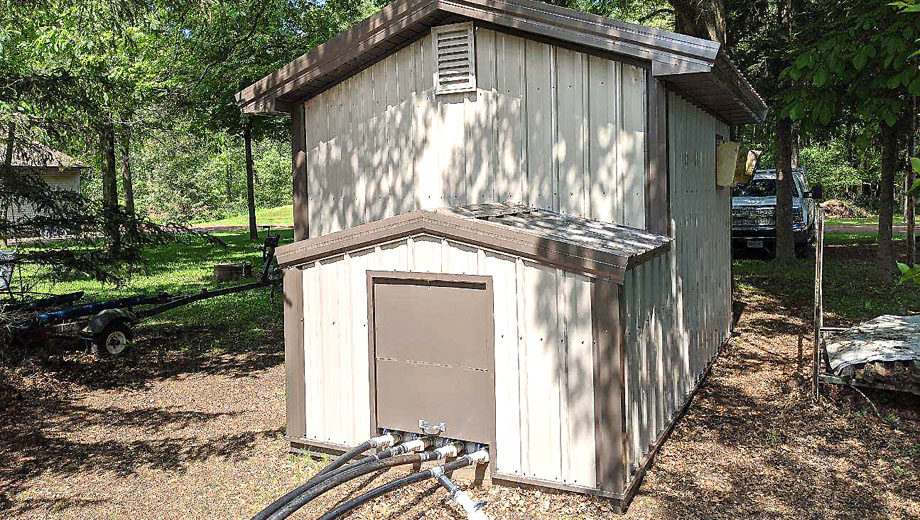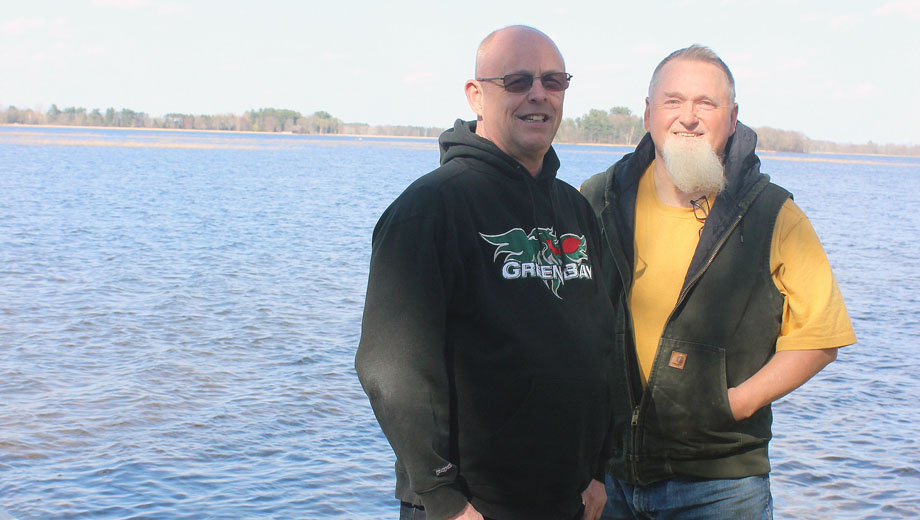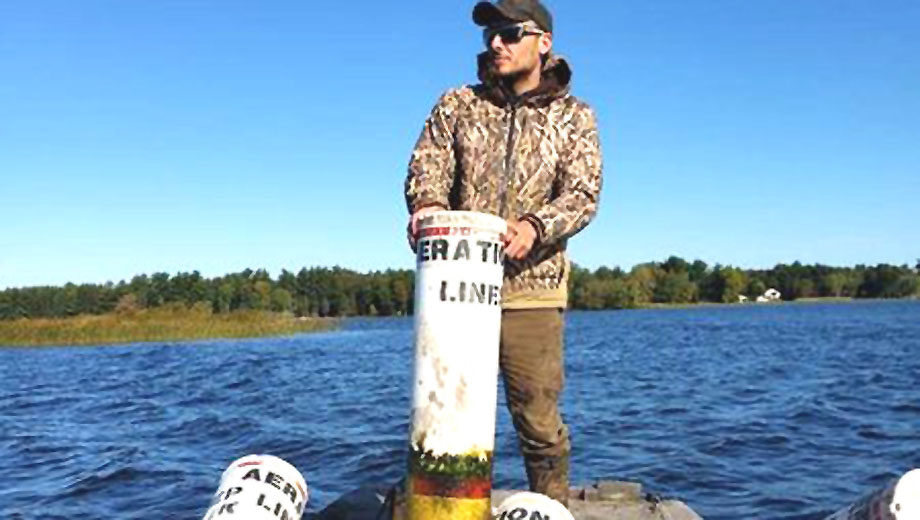Shallow lake needs winter aeration
By Greg Seubert
At just over 1,000 acres, White Lake is by far Waupaca County’s largest inland lake.
It also needs a little help and that’s where the White Lake Aeration Conservation Club comes in.
The club, which has existed since the late 1970s, maintains an aeration system that runs each winter on the lake, located between Weyauwega and Manawa.
The aeration system is important for the lake’s fishery, which includes panfish, largemouth bass, walleye and northern pike.
“Without it, it’s going to freeze out with a lack of oxygen in the winter,” club treasurer Scott Bechard said. “We won’t have any fish.”
Club president Tom Buchholz, who like Bechard lives on the lake, have been involved with the organization for years.
“It was started in ‘79 by a bunch of local guys that wanted to do something to improve the fishery on the lake.” Buchholz said. “The lake is a shallow lake that’s on the list of freeze outs, but if you add enough oxygen to the lake for the fish to breathe, then you can keep the fish alive. That was the goal for the club. The aeration has been going for 40 years and it’s been an important part of keeping fish alive during the winter. They can reproduce and provide entertainment for everybody on the lake.”
Focus on fishery
The club’s main focus is the lake’s fishery, while a separate organization, the White Lake Preservation Association, is concerned with boating, water quality and weed control issues.
“We take care of the physical stuff like the aeration and building duck houses,” Buchholz said. “They’re more into the boating channels and weed control. That’s their main focus.”
The White Lake Aeration Conservation Club hosts one major fundraiser each winter, a fisheree that usually draws a big crowd.
However, organizers canceled this year’s event due to coronavirus concerns and last year’s fisheree was called off because of unsafe ice conditions.
“We still sold raffle tickets those years and that’s the biggest part of our fisheree that gets the most revenue,” Bechard said. “It’s a fun community event and it keeps people interested in our club. We get members from that. We’ve been doing it for 40 years and it’s something that all the locals look forward to.”
“We have a large turnout and it seems like it’s growing in size,” Buchholz said. “People come out not just for the fish, but it’s a large family gathering, too. We give away free stuff for kids, so parents come out. We’re getting quite a bit of traffic from the Fox Valley. There’s a group of 30 or 40 guys from Oshkosh Public Works that have their own party on the ice. They’ll have their own prizes and a tent. One year, the rugby team from UW-Oshkosh came down.”
Club members play $20 a year for dues and the organization stocks fish in the lake if funds are available.
A varied fishery makes White Lake stand out, according to Buchholz.
“It’s the largest lake in Waupaca County, so that makes it special,” he said. “The thing about this lake from a nature standpoint is it’s very diverse. It has areas of cattails, marshes and different vegetation. What that means is that it can support all these fish. We have seven or eight different species of fish.”
The fishery includes bluegills, crappies, yellow perch, yellow bullheads, carp, largemouth bass, northern pike and walleyes.
“I think the panfish are the biggest draw,” Buchholz said. “We can grow nice panfish here because of the shallowness and all the food they have. It’s a perfect habitat for them.”
On the other hand, White Lake has a reputation for small northern pike.
“The small northerns have been in a stunted cycle for over 20 years,” Buchholz said. “Last year, we were able to work with a DNR fish biologist to come up with a plan to change that and break that cycle. The plan is a slot limit on northern. You have to throw back any northern that’s 25 to 35 (inches). They want to have you throw back the bigger fish.
“The bigger fish are carnivorous, so they feed on small northerns,” he said. “If we can keep the large northerns in the lake, they’ll finally break the cycle. We encourage people to keep the small ones.”
The lake has a daily bag limit of three northerns.
Lots of weeds
White Lake’s weeds don’t have a negative effect on the lake’s fish, Buchholz said.
“Fish like the cover of the weeds,” he said. “It affects boating more than anything. There are a lot of people that have pontoons. What better way to drive around the lake in a pontoon and enjoy the evening sunset.”
The aeration system makes the lake a popular fishing destination.
“We have two large compressors that are electric generated,” Buchholz said. “The compressors are located in a building we own. We have over a mile of plastic pipe that runs out to the lake to these areas. That’s where the air exchange takes place with the oxygen coming out of the pipe.
“That’s system has been going for about 30 years and we upgraded it about five years ago,” he added. “We brought new technology to the table. We used to aerate through a different method where we would take some plastic pipe and drill small holes in it, but we were never going to get the efficiency of this type of a system. I think there have been three or four systems in the lake and every time we put one in, it’s more efficient and we get a better response and better oxygen levels for less money.”
The club foots the bill for the system.
“Our electric bill in the winter when we run it can run up to $900, depending on if we have to run both pumps and if we have to run it 24/7,” Bechard said.
“We can turn it on in November and it really doesn’t shut off until April,” Buchholz said.
Three public boat landings are located on the lake’s south side. The most popular is located on Park Avenue off of State Highway 110, while other access can be found on Waukaunaka Street and off of South Shore Drive.
The club has about 40 members, Bechard said.
“It’s like a lot of clubs where 10 or 12 of us do most of the work, which is OK,” he said. “We appreciate them just paying their dues.”
The club plays an important role, Buchholz said.
“It’s very valuable to the community on the lake,” he said. “Not only do we get a sense of ownership by putting up a duck house or helping stock some fish, ownership means people care. You get the benefit of using the lake and also feel like you’re part of a bigger program than just me on the shore.”
“It helps our businesses uptown, too,” Bechard said. “We’ve been blessed with other businesses helping us out financially.”
“It works both ways,” Buchholz said. “We get a lot of volunteer work and financial help from sponsors and they don’t ever ask for anything back. After people leave the fisheree, they go to other businesses. I think it’s a pretty valuable thing to have.”

